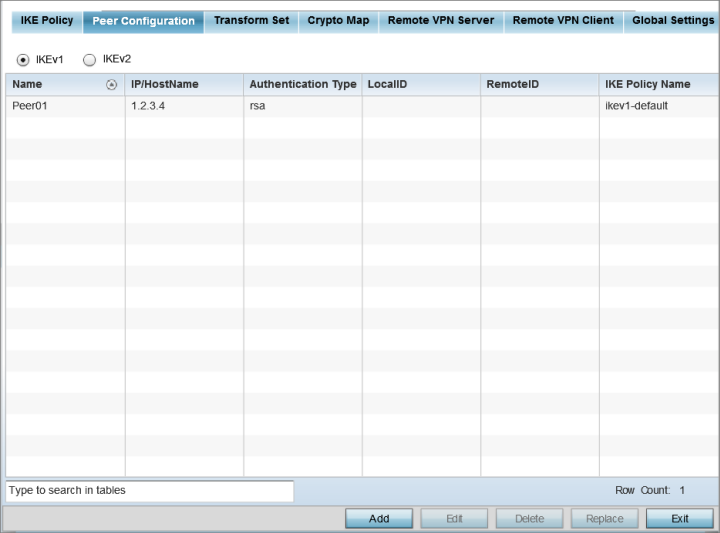To add a new peer configuration or edit an existing peer configuration.

|
Name |
Lists the 32-character maximum name assigned to each listed peer configuration at the time of its creation. |
|
Hostname/IP |
The IP address (or host address FQDN) of the IPSec VPN peer targeted for secure tunnel connection and data transfer. |
|
Authentication Type |
Whether the peer configuration has been defined to use PSK (pre-shared key) or RSA (Rivest, Shamir, and Adleman). RSA is an algorithm for public key cryptography. It is the first algorithm known to be suitable for both signing and encryption. If you are using IKEv2, this screen displays both local and remote authentication, because both ends of the VPN connection require authentication. |
|
Local id |
The local identifier used within this peer configuration for an IKE exchange with the target VPN IPSec peer. |
|
Remote id |
The means by which the target remote peer is to be identified (for example, string or FQDN) within the VPN tunnel. |
|
IKE Policy Name |
The IKEv1 or IKE v2 policy used with each listed peer configuration. |